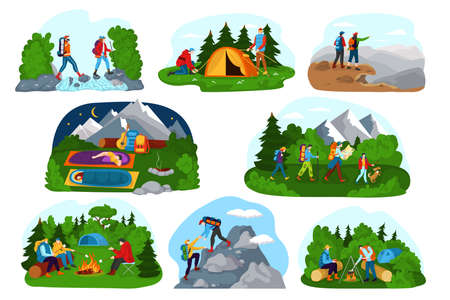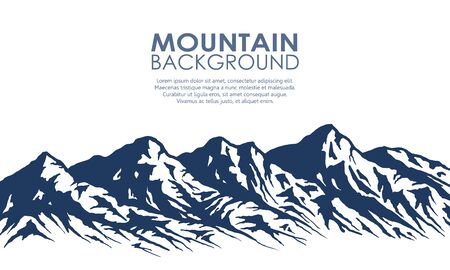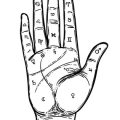Introduction to OS Maps: The Adventurer’s Essential Tool
Picture this: the wind howls across the Yorkshire Dales, rain lashes sideways on Dartmoor, or maybe you’re just trying to find your way through the maze of cobbled alleys in a historic British city. No matter where your boots take you—from wild, untamed moorlands to the urban sprawl of Manchester—there’s one thing every adventurer in Britain swears by: the Ordnance Survey (OS) map. These aren’t just maps; they’re lifelines, meticulously crafted guides that transform daunting terrain into navigable adventure. OS maps are woven into the fabric of British exploration culture, prized for their unrivalled detail and legendary accuracy. Whether you’re plotting a multi-day trek across remote highlands or navigating the labyrinthine footpaths snaking between London’s green spaces, decoding their symbols and legends is nothing short of essential. In a land where weather can change faster than you can boil a brew and paths vanish beneath bracken or city bustle, mastering an OS map isn’t just useful—it’s an outright necessity for survival and discovery alike.
2. Cracking the Code: Understanding OS Map Symbols
If you want to master British outdoor adventures, you’ll need to speak the language of Ordnance Survey (OS) maps—a dialect woven from quirky icons, cryptic lines, and a riot of colours that only reveal their secrets to those brave enough to decode them. This is not your average map-reading; it’s deciphering the visual vocabulary of British terrain, where every glyph hints at ancient footpaths, hidden hazards, and legendary landscapes.
The Legend Behind the Legend
Brits love understatement, and nowhere is that clearer than in OS map symbols. A tiny blue cross might signal a public phone box in a windswept village, while a humble black dot can mark the resting place of a Neolithic barrow or an isolated barn. Colour codes aren’t just for show either—they’re vital navigation tools.
| Colour | What It Means | British Terrain Example |
|---|---|---|
| Black | Man-made features | Churches, post boxes, railway lines |
| Blue | Water features | Rivers, lochs, reservoirs |
| Green | Vegetation & Public Access | Forests, parks, National Trust land |
| Brown | Relief & Landforms | Contours, hills, earthworks |
| Purple/Red | Routes & Boundaries | Footpaths, bridleways, county borders |
The Icons You Can’t Ignore
Buckle up: some symbols are uniquely British and packed with meaning. That chequered pink line? It’s an enigmatic permissive path—sometimes open, sometimes not. A pair of parallel green lines means a bridleway (horses welcome!), but swap for short dashes and you’re on a public footpath—classic right-to-roam territory.
Pitfalls and Perils Hidden in Plain Sight
The OS map legend doesn’t just guide; it warns. Triangular exclamation marks spell danger—think sudden drops or quicksand lurking on moors. Blue triangles flag youth hostels (a lifeline for soggy trekkers), while the iconic red telephone symbol might be your last hope when mobile signal fades to nothing in the wilds of Dartmoor.
Dive deep into this symbolic lexicon and you’ll start to see Britain differently—with every contour line and curious icon hinting at stories untold and hazards unseen. The map isn’t just a guide; it’s your invitation to adventure.

3. Legends of the Land: How to Read the OS Key Like a Pro
Embark on a deep-dive into the legend—the Rosetta Stone of British maps. Every Ordnance Survey map comes armed with a key, an arsenal of symbols and colour codes that transform abstract paper into living, breathing terrain. Mastering this legend isn’t just for the boffins; it’s your ticket to decoding secret rights of way, uncovering ancient stone circles, and navigating public byways like a local. Start with the basics: footpaths are usually dashed green lines, bridleways in blue, and byways open to all traffic painted in twin red dashes. Then there are the icons—medieval churches marked with crosses, tumuli (ancient burial mounds) as tiny dots with radiating spokes, and even stone circles depicted as miniature rings. The legend will also reveal boundaries—parish, civil or otherwise—and show you how to spot contour lines that tell the tale of every rolling hill or precipitous drop. For the true adventurer, familiarise yourself with lesser-known symbols such as youth hostels (a friendly triangle), viewpoints (an eye), or even sites of historic battles (crossed swords). Each detail on the key is an invitation to push deeper into Britain’s wild tapestry, ensuring that no hidden path, forgotten ruin or public access route escapes your notice. Crack the code, and suddenly every OS map becomes a treasure map—just waiting for you to blaze your own trail across storied ground.
4. Contours, Heights, and the Art of Reading the Land
Time to get your boots muddy with the nitty-gritty of British landscapes—where every rise, dip, and undulation tells a story on your Ordnance Survey (OS) map. Mastering contours, heights, and trig points isn’t just for die-hard fell runners or seasoned ramblers; it’s a rite of passage for anyone itching to tackle the moors, scale a Lakeland crag, or simply avoid an unexpected slog up a Welsh hillside.
Contours: The Pulse of the Land
On an OS map, those brown spaghetti lines aren’t just decoration—they’re your early warning system. Each contour line joins points of equal height above sea level, sketching out every subtle hump and yawning valley that Britain throws at you. The closer the lines cluster together, the steeper the ground gets—think Yorkshire Dales escarpments or Peak District edges. If they’re spaced out like a lazy Sunday stroll, you’re in rolling countryside. Here’s how to crack their code:
| Contour Interval | Common Terrain Type |
|---|---|
| 5m | Parks, gentle hills (Urban areas) |
| 10m | Most British countryside (OS Explorer/Landranger maps) |
| 15-20m+ | Mountainous terrain (Scottish Highlands) |
Spot Heights & Trig Points: Concrete Proof You’ve Arrived
If contours are the heartbeat, spot heights and trig points are the milestones. Spot heights appear as tiny black numbers sprinkled across summits or saddles—the OS cartographers’ way of telling you precisely how high you’re about to puff your way up (or down). Trig points—those squat concrete pillars dotted across Britain’s peaks—are marked by a small triangle with a central dot. They’re relics from the golden age of mapping but still beloved by hillwalkers for their Instagram-worthy summit selfies.
Key Map Symbols for Elevation Features
| Symbol | Description |
|---|---|
| △ | Trig Point (Triangulation Pillar) |
| • Number (e.g., 278) | Spot Height (in metres above sea level) |
The Undulations Underfoot: Reading Britain’s Legendary Terrain
Boggy Pennine paths, knife-edge ridges in Snowdonia, hidden combes in Exmoor—each has its signature on an OS map if you know what to look for. A cluster of contours with a blue squiggle signals a stream gouging through a steep-sided gill; wide U-shaped sweeps reveal glacial valleys ripe for adventure or ambush by weather. Decoding these features lets you plan epic routes—and dodge those infamous British surprises when boots hit ground.
5. Essential British Features: From Stiles to Standing Stones
If you’re plotting a course across the wild and storied landscapes of Britain, decoding the OS map’s most uniquely British symbols is a rite of passage. These are not your everyday map features—these are icons woven into the fabric of the countryside, each with its own tale and utility. Let’s break down the must-know features that make a British adventure truly unforgettable.
Lonesome Pubs: The Welcome Waypoints
No ramble or trek is complete without spotting the tiny pint glass symbol on your OS map—denoting a public house. In the middle of moors or tucked away in valleys, these lonesome pubs are legendary for offering warmth, stories, and a well-earned ale after miles on your boots. Spotting this icon can turn an arduous day into a memorable one.
Stiles and Kissing Gates: Navigating Boundaries
The humble stile—a ladder or step for crossing fences—and the ever-charming kissing gate (named for its gentle swing rather than romantic trysts) are vital for walkers navigating Britain’s patchwork of fields and ancient boundaries. On OS maps, these are marked by distinct icons, helping you plan routes that avoid unnecessary detours or awkward scrambles over drystone walls.
Roman Roads: Marching Through History
Few features conjure up adventure like Roman roads—those arrow-straight lines cutting across the landscape, remnants of imperial ambition. They’re shown as bold lines often labelled “ROMAN ROAD (course of)” on OS maps, guiding modern explorers along routes trodden by legions two millennia ago. Follow them for both efficiency and a brush with history.
Archaeological Wonders: Stone Circles and Standing Stones
Britain’s wild terrain is littered with enigmatic archaeological sites—stone circles, standing stones, hill forts—that ignite the imagination. On your OS map, look for small stone-like icons or evocative names (“Stone Circle”, “Standing Stone”) that mark places where myth and mystery linger in the air. These sites are more than just waypoints; they’re portals to ancient worlds.
Never Miss an Icon Again
The real magic of British OS maps lies in their detail. Each pub sign, stile symbol, or ancient monument is a promise of discovery. Mastering these essential features means you’ll never miss out on a classic country pub lunch, get stuck at an impassable hedge, or wander past stones that have stood sentinel for centuries. Take time to learn these icons before you set off—and let every feature add another layer to your adventure story.
6. Common Pitfalls and Pro Tips for Navigating Like a Brit
If you think decoding an OS map is a doddle, think again—even seasoned ramblers and hillwalkers stumble into classic traps on British soil. One notorious misstep is mistaking footpaths for bridleways, especially in the tangle of hedgerows or when tracks have faded with time. Always double-check the dash patterns: short dashes for footpaths, long for bridleways—miss this and you could find yourself knee-deep in mud, or worse, trespassing!
Beware the Ambiguous Features
British terrain is a master of disguise. Ancient field boundaries, indistinct streams, or even old railway cuttings often remain etched onto maps but have all but vanished from the land itself. When symbols and reality don’t match, use surrounding landmarks as reference points—church spires, stone walls, or even lonely phone boxes are often more reliable than that “supposed” bridge over a now-dry beck.
Weathered Signs and Vanishing Markers
Britain’s weather isn’t kind to signposts. Many a waymarker has been claimed by brambles or battered by storms. Don’t rely solely on signposts—cross-reference with grid references and use natural features as your compass. If in doubt, trust your OS map over a dubious fingerpost pointing into oblivion.
Pro Tips to Stay ‘On Track’
- Always orient your map: Before charging ahead, align your map with the landscape; it’s basic but bulletproof.
- Master the legend: Not all symbols are intuitive—memorise or keep the legend handy for those odd icons like tumuli (ancient burial mounds) or non-coniferous woodland patches.
- Practice pacing: In foggy conditions or featureless moors, count your steps between known points to avoid drifting off course.
- Don’t be afraid to backtrack: Even experts get turned around—retracing steps is better than blundering deeper into confusion.
Navigating like a true Brit means embracing the quirks of both the land and its maps. Treat every outing as an adventure in interpretation—and remember: getting slightly lost is half the fun!
7. Conclusion: Map Decoding for a True British Adventure
If you’ve made it this far, you’re not just a casual wanderer—you’re primed to join the ranks of true British explorers. Mastering OS map symbols and legends isn’t about ticking boxes; it’s about unlocking the ancient heartbeat of Britain’s wild spaces, from misty moors to tangled hedgerows and windswept peaks. With your newfound map-reading prowess, every footpath transforms into a thread of adventure, every contour line whispers tales of challenge and triumph. This isn’t merely navigation—it’s stepping into the living heritage of ramblers, climbers, and wild campers who’ve braved these isles for generations. So stuff your rucksack, lace up your boots, and let the OS map be your passport to discovery. Whether you’re plotting an epic coast-to-coast trek or tracing secret green lanes on your bike, remember: with every symbol cracked and legend deciphered, you’re weaving yourself into the fabric of British adventure. Embrace the thrill—Britain’s terrain is calling, and now you hold the key.


